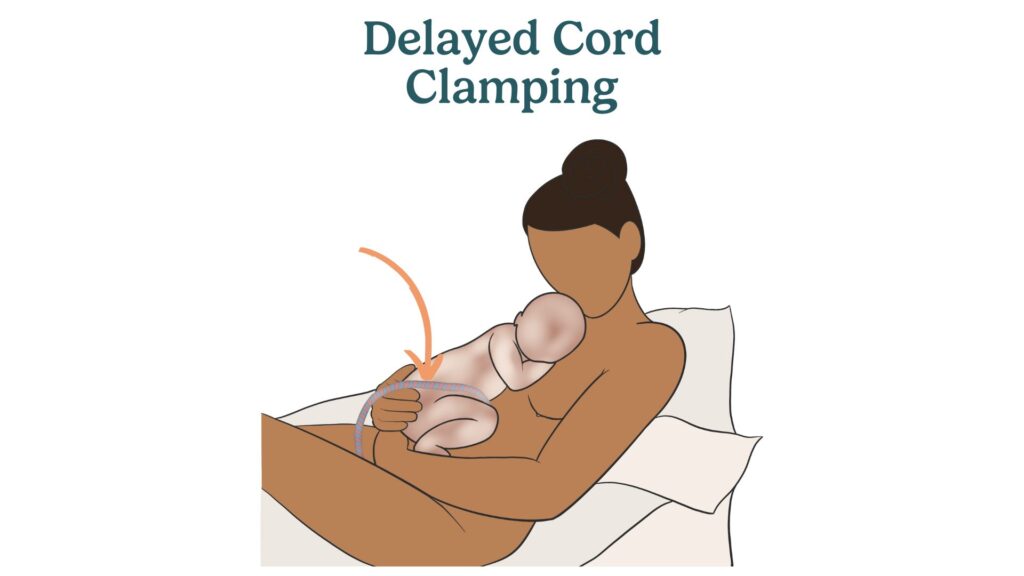delayed cord clamping

Delayed cord clamping
Delayed cord clamping (DCC) is the practice of waiting to clamp and cut the umbilical cord until a few minutes after birth, rather than immediately. This allows extra blood to flow from the placenta to the newborn, providing several health benefits.
What to watch out for
It’s important to understand the benefits and potential considerations of delayed cord clamping:
- Increased blood volume: Delayed cord clamping allows your baby to receive more blood from the placenta, increasing their blood volume by up to a third.
- Higher iron levels: This extra blood is rich in iron, which can help prevent iron deficiency in the first months of life.
- Better circulation: The additional blood can improve circulation and oxygen delivery to your baby’s organs.
To manage delayed cord clamping, consider these tips:
- Discuss with your healthcare provider: Talk to your doctor or midwife about your preference for delayed cord clamping during your birth plan discussions.
- Understand the timing: Typically, the cord is clamped between one to five minutes after birth, or when it stops pulsating.
- Immediate newborn care: Delayed cord clamping usually does not interfere with immediate newborn care, such as skin-to-skin contact and breastfeeding initiation.
Physical limitations or health circumstances
Certain conditions may influence the decision to practice delayed cord clamping:
- Preterm birth: Delayed cord clamping is particularly beneficial for preterm infants, improving blood pressure, reducing the need for transfusions, and decreasing the risk of intraventricular hemorrhage.
- Maternal health: Severe maternal bleeding or other health complications may necessitate immediate cord clamping.
- Baby’s health: If the baby requires immediate medical attention or resuscitation, the cord may need to be clamped sooner.
Other terms
Understanding related terms can help you better manage the decision around delayed cord clamping and related birth practices:
Umbilical cord: The cord that connects the baby to the placenta, supplying oxygen and nutrients during pregnancy.
Placenta: The organ that provides oxygen and nutrients to your baby and removes waste products from your baby's blood.
Iron deficiency: A condition where there is a lack of iron in the body, which can affect your baby’s development.
Skin-to-skin contact: Holding your baby against your skin immediately after birth to promote bonding and breastfeeding. Read our blog post about skin-to-skin here.
Birth plan: A document outlining your preferences for labor and delivery, including decisions about cord clamping.


